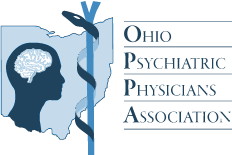Complete Story
07/27/2016
Only 10% of TRS patients receive the superior treatment clozapine
Source: Health Affairs Blog
Even when effectively treated, schizophrenia can be devastating, impairing a person’s social and family life, ability to work, physical health, and quality of life. Those who have schizophrenia often end up alone and impoverished. Yet the effects of this disease are even worse when treatment doesn’t work.
Treatment-resistant schizophrenia (TRS) is formally defined as schizophrenia that is not well controlled despite adequate trials of at least two medications — a definition that applies to between 20 to 30 percent of patients with the condition. An effective treatment exists for TRS: the anti-psychotic clozapine, which was first used to treat schizophrenia in 1971 and approved for use in the United States since 1989. Multiple studies have shown that clozapine is clearly superior to other treatment strategies for TRS, and that it is the only treatment proven to work for TRS.
Despite this evidence, in most settings only 10 percent of patients with TRS are receiving clozapine — and the percentage is often far lower than that. Although clinical guidelines unanimously recommend offering clozapine after two other medications have not worked, patients are usually given 15 to 20 different medications sequentially over the course of a decade or more before clozapine is considered.

